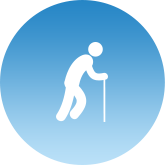What is Arthritis?
Arthritis is characterized by the inflammation of one or multiple joints. Its main symptoms are joint pain and stiffness that worsen over time. Though it is most prevalent in older people aged 65 and above, this joint disorder can also develop in younger adults, sometimes even affecting children and teenagers. It has been found to affect more women than men, as well as those who are overweight.
Contrary to what many people think, arthritis is not a single disorder; in fact, it has over 100 types, each having different causes and treatments. The most common types, however, are osteoarthritis, in which the cartilage deteriorates, and rheumatoid arthritis, a disorder where the body’s immune system attacks the joints.
Damage done to the joints are irreversible, but their progression can be stopped and their symptoms relieved through targeted treatments, which vary depending on the type and stage of the arthritis.










